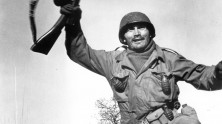
Limelight
With Charles Chaplin, Claire Bloom, Sydney Chaplin.
US, 1952, 35mm, black & white, 137 min.
Print source: Janus Films
Aldrich’s last stint as assistant director was working for a director known for his immovable opinions and total control. Apparently, Chaplin balked at Aldrich’s suggestions of more inventive camera movements and careful maintenance of continuity. After his first box office flop, Monseiur Verdoux (1947), the director seemed focused on telling the story his own way, with a reflexive, melancholic and poetic theatricality. Though not Chaplin’s actual autobiography, it seems his emotional one. He plays Calvero, a once-famous, alcoholic vaudevillian who rescues Terry, a young ballet dancer (which in reality gave Claire Bloom her cinematic start). This casts into tragicomic motion a tale of the darkness and light, the beauty and sacrifice of life in the limelight. Marking the only time Buster Keaton and Chaplin appear in a film together, Limelight culminates in their brilliant performance in which art and existence seem to collapse absurdly and heartbreakingly upon one another. As Calvero passes on the torch to Terry, perhaps Chaplin, with Limelight, hands the same over to apprentices like Aldrich. Accused of suspicious activity during the paranoid blacklist era, Chaplin was ushered back to London by the very country who considered him its iconic tramp, and Limelight was virtually unseen in the US until the 70s.








































